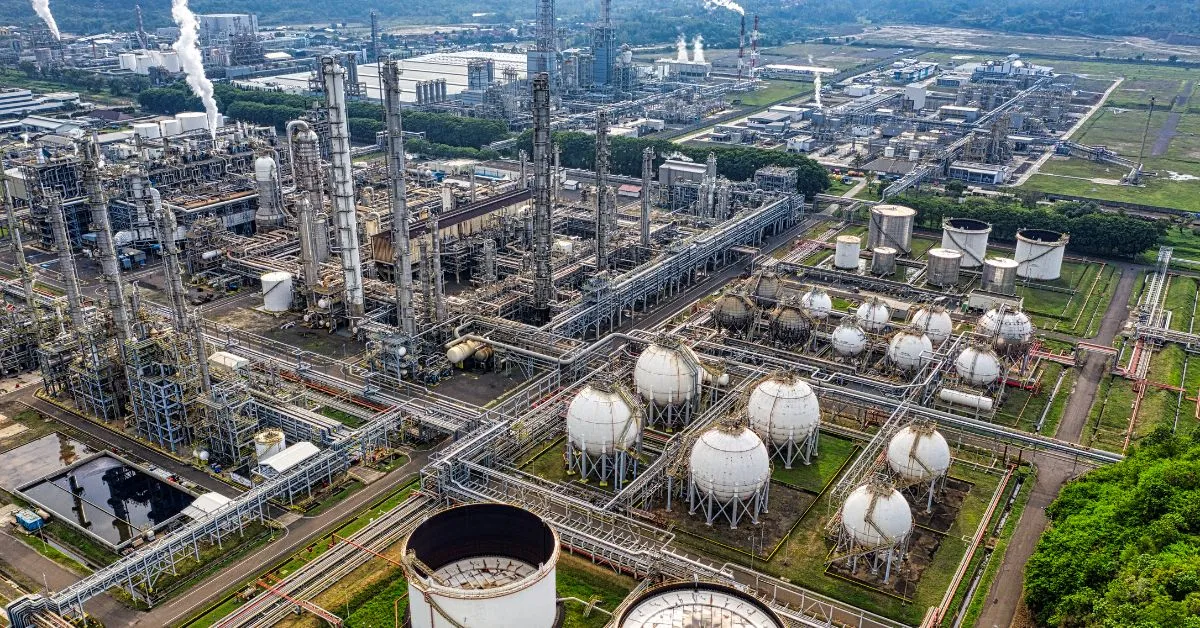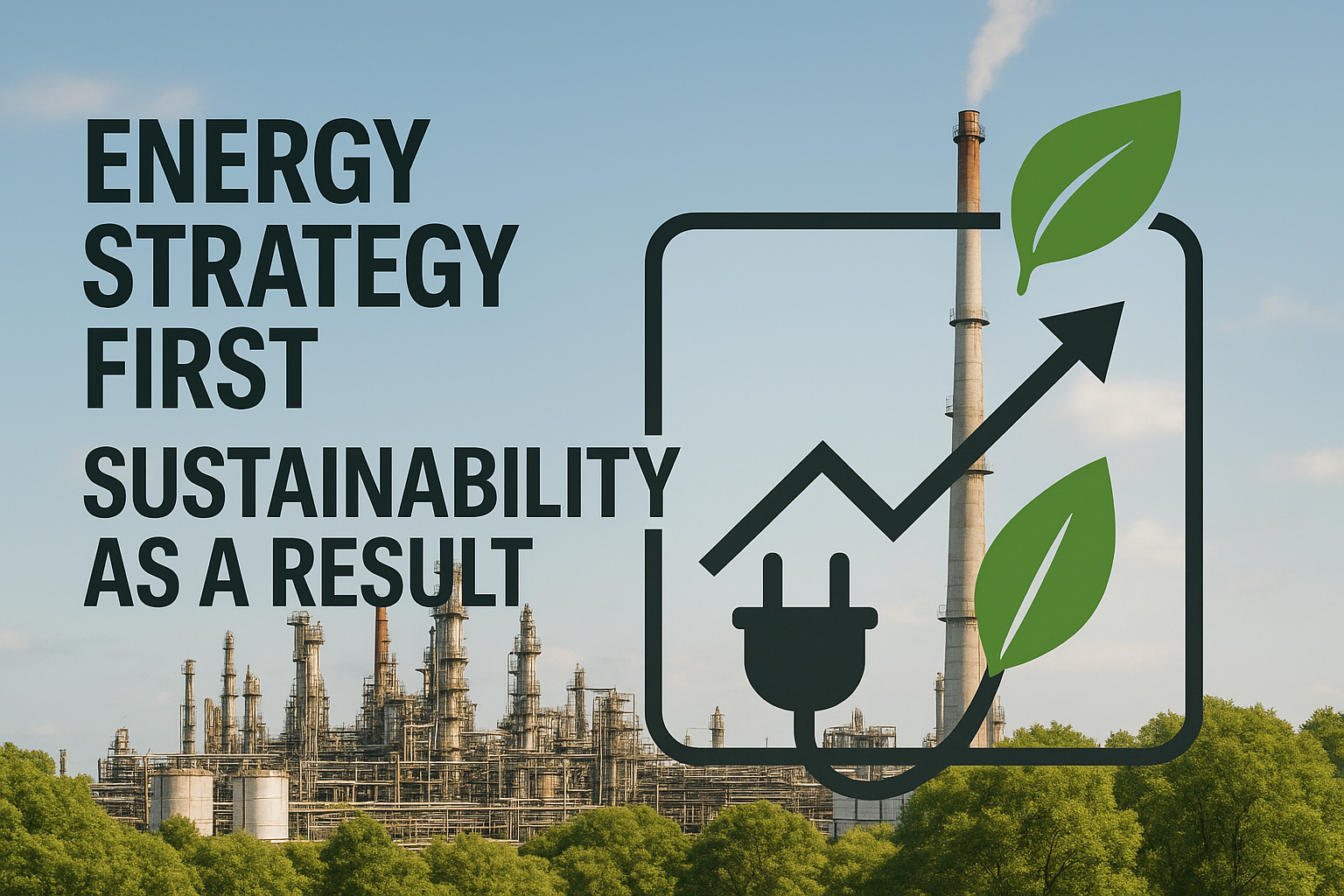Inside chemical plants and refineries, the often-unseen flow patterns of materials through reactors and vessels directly impact financial outcomes. These patterns determine whether a plant operates profitably or wastes resources producing off-spec product.
Real-time AI optimization enhances front-line operations by adjusting flow rates, temperature profiles, and feed ratios to maximize margins despite changing conditions. 41% of surveyed process industry leaders report improved process optimization and control after deploying AI technology.
AI optimization technology delivers superior results compared to conventional process control methods, especially when managing residence time distribution (RTD), which measures exactly how long different portions of material remain inside processing units.
The integration of advanced process control (APC) with industrial AI creates an adaptive, closed-loop approach that optimizes RTD in real time, transforming how process industry leaders maintain quality and maximize throughput.
Why Residence Time Distribution Matters More Than You Think
Mean residence time reveals only the average span that material spends inside a vessel, while the full residence time distribution (RTD) exposes how every fraction of flow moves through that same space. When the curve broadens or skews, portions of the feed either linger too long, risking degradation, or escape too quickly, leaving reactions incomplete and generating off-spec material.
Process industry leaders feel these effects most acutely through uneven conversion that lowers yield and forces costly rework, while side reactions consume reagents and energy.
Regulators now treat RTD as a core element of quality-by-design. Guidance under ICH Q13 highlights that manufacturers must understand and control distribution patterns to assure consistent product quality.
Three flow anomalies drive most performance losses:
- Channeling creates preferential pathways that short-circuit proper mixing
- Dead zones trap material and stretch the RTD tail
- Short-circuiting bypasses critical reaction zones altogether
Each scenario wastes reactants, erodes efficiency, and threatens specification limits. Distribution patterns drift as flow rates, viscosity, or equipment wear change, so a once-validated curve can mislead months later.
Mastering RTD becomes pivotal for higher throughput, tighter quality control, and confident regulatory compliance.
Traditional RTD Modeling Falls Short in Dynamic Operations
Classic pulse tracer and step-input tests capture just a snapshot of flow behavior, freezing the system in time rather than following the shifting conditions plants face from shift to shift. Because those experiments feed idealized CSTR or plug-flow equations, the resulting curves rarely mirror the complex mixing, back-flow, and bypass paths inside real equipment.
Even when those curves look reasonable, several hurdles keep them from guiding day-to-day control. Parameter fitting demands fresh campaigns whenever flow rate, viscosity, or blender speed moves, and the choice of a chemically inert yet easily detectable tracer can be restrictive. The data describes only a single operating point, failing to show how residence times widen or skew during disturbances.
These gaps leave operators working with incomplete information. Without continuous, adaptive feedback, opportunities to tighten conversion, cut waste, or prevent off-spec product slip through unnoticed.
How AI Learns Flow Patterns From Process Data
AI extracts residence time distribution insights directly from data already streaming through the control system, eliminating the need for disruptive tracer studies. By combining multivariable sensor histories with optimization techniques, AI models infer how material actually moves through vessels, capturing the full distribution curve rather than a single mean value.
The approach starts by building a virtual replica that functions like a digital twin, trained on months or years of plant data. Natural disturbances, feed-rate swings, temperature drifts, and start-ups act as informal tracers.
Each event teaches the models how flow paths expand, contract, or short-circuit in real time. The models keep learning as conditions evolve, mirroring the continuous-update philosophy behind deep learning process control.
Every prediction ties back to transparent process variables, so the resulting RTD map supports data-driven quality assessments favored by regulators. The same pattern-recognition engine adapts across stirred tanks, tubular reactors, and packed beds, distinguishing routine variability from channeling or dead-zone anomalies before they erode yield.
Real-Time RTD Optimization Through Advanced Process Control
Advanced process control represents a multivariable, model-based approach that predicts unit behavior and adjusts critical parameters in real time to maintain optimal performance. Unlike conventional feedback loops, APC platforms use dynamic models to anticipate conditions several minutes or hours ahead.
This predictive capability allows controllers to adjust flow rates, recycle ratios, agitation speeds, or baffle positions before RTD broadening can erode conversion or product quality. When APC integrates with neural network predictive control, the results become more pronounced.
Continuous model verification built into this framework aligns with ICH Q13 expectations, providing real-time confirmation that each production lot meets design space requirements. This integration transforms RTD control from an offline calculation into a self-optimizing function that protects yield, maintains quality standards, and ensures regulatory compliance without increasing operator workload.
The combination of APC and AI effectively closes the loop between process insight and corrective action, enabling plants to maintain optimal distribution performance even as operating conditions shift throughout production campaigns.
Detecting and Compensating for Flow Anomalies
Flow anomalies silently distort residence time distribution, creating uneven patterns that reduce reactor efficiency. AI models detect these issues by monitoring temperature, pressure, and composition signals, recognizing subtle asymmetries before they appear in standard data.
The model identifies irregular flow patterns and pinpoints their location by correlating sensor data with evolving characteristics. This capability extends to detecting dead zones, where material lingers in stagnant pockets and extends residence times unevenly.
Once detected, the control system automatically initiates corrective actions: redistributing flow to break preferential paths, adjusting mixing speeds to revitalize stagnant regions, changing recycle ratios to address hot spots, and tuning temperature profiles to restore uniform reaction conditions.
Because detection happens in real time, maintenance teams receive early warnings that point to fouling, wear, or equipment changes. This enables repairs to be scheduled during planned outages instead of crisis shutdowns, creating an adaptive approach that keeps RTD tight while preserving uptime and product quality.
Connecting RTD Control to Product Quality and Yield
When residence time distribution stays tight and predictable, every particle experiences the same conversion window, driving uniform product composition and far fewer off-spec lots. Advanced neural network control strategies can cut RTD variance compared to conventional approaches; a difference that translates directly to steadier quality and easier batch release for regulators and customers alike.
A narrow distribution curve also amplifies yield potential. More complete conversion, fewer side reactions, lower raw-material purge, and reduced energy spent on reprocessing all add up to higher throughput without extra feedstock. Uniform contact time keeps catalyst exposure balanced, extending activity and delaying costly changeouts.
Across pharmaceuticals, petrochemicals, and other process industries, plants adopting data-driven RTD control can expect higher yields, smaller waste streams, and measurable energy savings. The result creates a virtuous cycle: tighter distribution patterns lower quality risk, boost profitability, and reinforce compliance initiatives, providing a compelling business case for real-time control investments.
RTD Modeling Across Different Process Types
AI-driven distribution control adapts to almost any flow regime because the models learn from your data rather than rigid geometric assumptions. In a continuous stirred tank, they focus on the back-mixing that broadens residence time patterns.
In tubular reactors, the same AI models track axial dispersion so you can adjust flow or recycle rates before conversion slips. Packed beds benefit when the model spots early channeling signatures and suggests redistributing feed to prevent short-circuiting.
Multiphase columns demand two simultaneous distributions, one for gas, one for liquid. AI handles that complexity naturally, using temperature or composition profiles to untangle the mixed signals. Polymer crystallizers are more sensitive; a shift in distribution shows up as a tail on molecular-weight data, prompting gentle tweaks to agitation that keep product in spec.
The same learning framework adapts to cement kilns, metal furnaces, and specialty chemical loops, so you avoid building reactor-specific code. A single data-driven approach, sharpened by real-time process data and supported by AI optimization, delivers plant-wide distribution consistency and higher overall efficiency.
How Imubit’s Closed Loop AI Optimization Masters Residence Time Distribution
Residence time distribution drifts when flow rates shift, viscosity changes, or equipment begins to foul, rendering conventional models ineffective. Imubit’s Industrial AI Platform addresses this challenge by learning distribution patterns directly from plant data, eliminating tracer tests and associated downtime.
The platform’s Closed Loop AI Optimization (AIO) technology continuously refines a virtual replica of your process, then writes optimal setpoints back to the control system through the existing advanced process control (APC) layer.
The model learns in real-time, anticipating distribution shifts and adjusting variables before product quality risks emerge. Field deployments show substantial improvements in yield and energy efficiency while maintaining all safety and economic constraints.
As implementations expand, the platform scales from individual reactors to plant-wide coordination, enabling process plant leaders to realize measurable improvements in throughput and reliability.
Prove the value of AI optimization at no cost with a complimentary, expert-led assessment of your plant’s RTD control potential. Get a plant assessment to see how Imubit’s data-first approach can transform your process operations.




